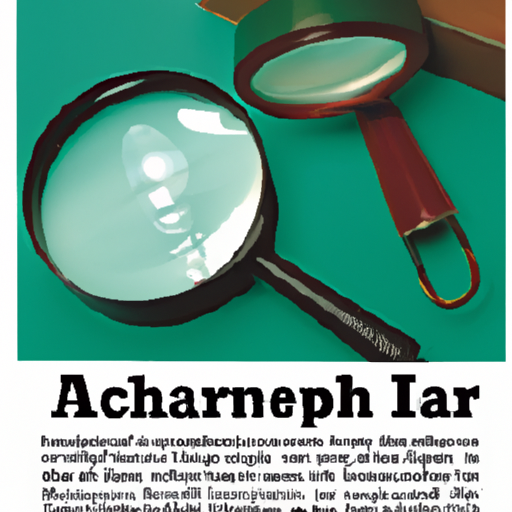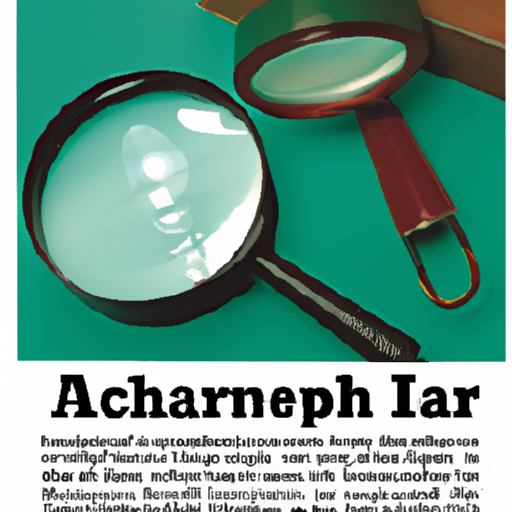Have you ever wondered about the different types of social media platforms and their pros and cons? Well, you’re in luck because in this article, we’ll be diving into the world of social media and exploring the various platforms that are available to us. Whether you’re an avid user or just starting out, understanding the different options and their advantages and disadvantages can help you make informed decisions about which platforms to use.
Let’s start with the ever-popular Facebook. With over 2 billion monthly active users, there’s no denying its influence in the social media landscape. Facebook allows you to connect and interact with friends and family, join groups of shared interests, and discover new content. However, its algorithmic feed and targeted advertising have been subject to criticism, raising concerns about privacy and the spread of misinformation.
Next up is Twitter, the platform known for its bite-sized updates in the form of tweets. It’s a great place to share your thoughts, engage with others through likes and retweets, and stay up to date with current events. However, the character limit can be restrictive, leading to misunderstandings or oversimplification of complex topics. Additionally, the fast-paced nature of Twitter can sometimes feel overwhelming and contribute to the spread of misinformation.
Moving on to Instagram, the visual paradise for photography enthusiasts and aesthetically pleasing content lovers. Instagram allows you to share photos and videos, follow your favorite creators, and discover new trends. It’s a great platform for self-expression and inspiration. However, the emphasis on curated and edited content can create unrealistic beauty standards and encourage comparison and self-esteem issues. Additionally, its algorithmic feed can prioritize popularity over quality, making it harder for new or lesser-known accounts to gain visibility.
These are just a few examples of the countless social media platforms out there, each with their own unique features and drawbacks. By understanding the pros and cons of each platform, you can navigate social media more consciously and make the most out of your online experiences. Stay tuned for the rest of the article as we delve deeper into the world of social media and explore additional platforms and their advantages and disadvantages. See you there!

Overview of Etc.
Etc., short for “et cetera,” is a commonly used abbreviation that refers to a wide range of items, topics, or situations that are not specifically mentioned. It is often used to indicate that there are more things to be included, but they are not listed for brevity.
Definition of Etc.
Etc. is derived from the Latin phrase “et cetera,” which means “and other things” or “and so forth.” It is used to represent additional elements or examples that are not explicitly mentioned. It is a convenient way to indicate that there are more items within a given category or list.
Importance of Etc.
Etc. plays a crucial role in communication by allowing individuals to convey the idea that there is more to consider or include without explicitly listing every single item. It provides a shorthand method of expressing that there are additional elements without going into exhaustive detail.
Common Uses of Etc.
Etc. is used in various contexts to indicate that there are more examples or items that could be mentioned but are not explicitly stated. It is commonly used in lists, discussions, and descriptions to save time and space. Some common applications of etc. include:
- Lists of items: When writing a list, etc. can be used to represent additional items that follow the ones already mentioned.
- Examples: In discussions or presentations, etc. is often employed to indicate that there are more examples that can be given.
- Categories: Etc. can be utilized to represent other elements within a particular category without listing each one individually.
Pros of Etc.
Increased Efficiency
One of the major advantages of using etc. is that it improves efficiency in communication. By using the abbreviation, you can save time and space by avoiding the need to list out each individual item. This allows for more concise and focused communication.
Cost Savings
Using etc. can also result in cost savings. In certain situations, providing an exhaustive list of items can be expensive, especially when it comes to printing or publishing. By using etc., you can reduce printing costs and save resources.
Flexibility and Customizability
Another benefit of using etc. is the flexibility it offers in conveying information. By using this abbreviation, you can leave room for interpretation and allow the audience or reader to fill in the gaps based on their own knowledge or experience. This flexibility can make communication more adaptable to different contexts.

Cons of Etc.
Initial Investment
While etc. offers several advantages, it is not without its drawbacks. One of the main disadvantages is the initial investment required to familiarize people with the abbreviation. If individuals are not accustomed to using or understanding etc., it may take some time and effort to educate them about its meaning and usage.
Technical Challenges
In certain technical fields or industries, using etc. may not be appropriate or suitable. These areas often require precise and detailed explanations without leaving any room for vague interpretations. In such cases, etc. may be seen as imprecise or unprofessional.
Security Risks
Using etc. can also pose security risks in certain contexts. When conveying sensitive information or discussing confidential matters, relying on etc. to represent additional items may be risky. It is important to ensure that sensitive information is clearly and explicitly communicated without any ambiguous representations.
Factors to Consider when Using Etc.
When deciding whether to use etc., there are several factors to consider to ensure it is appropriate and effective in your communication. These factors include:
Compatibility with Existing Systems
Before incorporating etc. into your communication, ensure that it is compatible with existing systems, platforms, or guidelines. Some organizations or industries may have specific rules or preferences regarding the use of etc., and it is important to adhere to those guidelines.
Training and Support
If etc. is not commonly used or understood in your organization or industry, it may be necessary to provide training and support to ensure proper usage. This can involve educating individuals on the meaning, purpose, and appropriate contexts for using etc.
Scalability
Consider the scalability of using etc. in your communication. While it may be suitable for smaller lists or discussions, it may become less effective when dealing with larger or more complex scenarios. Evaluate whether etc. will still convey the intended message clearly and concisely in different contexts.
Examples of Successful Etc. Implementations
Case Study 1: Company A
Company A, a multinational corporation, successfully implemented the use of etc. in their internal communication. By incorporating etc. into their email templates and guidelines, they were able to improve efficiency and reduce unnecessary information overload. Employees appreciated the concise and focused communication style, which resulted in increased productivity.
Case Study 2: Organization B
Organization B, a non-profit organization, adopted etc. in their fundraising campaigns. By using etc. to represent additional examples of how donations can make a difference, they were able to convey the impact of their work without overwhelming potential donors with a lengthy list of specific projects. The use of etc. allowed donors to envision different possibilities.
Case Study 3: Institution C
Institution C, an educational institution, implemented the use of etc. in their course descriptions. Instead of listing all possible prerequisites or recommended courses, they used etc. to indicate that there are additional requirements that should be considered. This enabled students to tailor their course selections based on their individual interests and goals.
Comparing Etc. to Other Alternatives
Etc. vs Option 1
When compared to Option 1, etc. offers greater flexibility and brevity. While Option 1 may provide a more detailed and exhaustive list, etc. allows for more concise communication while still conveying the idea that there are additional items to be considered.
Etc. vs Option 2
In contrast to Option 2, etc. provides a more generalized representation of additional elements. Option 2 may involve specifying a few additional items, whereas etc. allows for a broader interpretation and understanding that there is more to be included.
Etc. vs Option 3
Option 3, although similar in concept, may require additional explanation or clarification. Etc. provides a more commonly understood method of representing additional items without the need for detailed explanations, making it a more efficient and widely accepted choice.
Ethical Considerations of Etc.
When using etc. in communication, there are ethical considerations to keep in mind. These include:
Data Privacy
Ensure that when using etc., any sensitive or confidential information is appropriately communicated. Avoid using etc. to represent sensitive data that may compromise privacy or violate ethical guidelines.
Transparency
Although etc. allows for more efficient communication, it is important to maintain transparency in your messages. If more information is required or requested by the audience, be prepared to provide it and avoid withholding essential details under the guise of etc.
Equitable Access
Consider the potential impact of using etc. in terms of equitable access to information. Ensure that the use of etc. does not exclude or disadvantage individuals who may need specific information to participate fully or make informed decisions.
Future Trends in Etc.
As technology continues to advance, the use of etc. is likely to evolve. Some future trends in etc. include:
Advancements in Technology
With the rise of artificial intelligence and natural language processing, there is potential for technology to automatically generate appropriate examples or items to fill in the gap indicated by etc. This can further enhance the efficiency and effectiveness of communication.
Integration with Artificial Intelligence
As AI becomes more sophisticated, it could assist in identifying and suggesting appropriate items to be included after etc. This integration could provide personalized and context-specific recommendations, making communication even more tailored and efficient.
Impact on Various Industries
The use of etc. is likely to continue impacting various industries, particularly those that rely heavily on communication and documentation. From marketing to academia, organizations will continue to explore the benefits and drawbacks of etc. in their respective fields.
Challenges and Limitations of Etc.
Regulatory Compliance
In industries such as healthcare and finance, where regulatory compliance is of utmost importance, the use of etc. may not be suitable. These sectors often require precise and explicit information to meet legal and regulatory requirements. Etc. may be seen as insufficient or imprecise.
Resistance to Change
Introducing etc. into an established communication system may face resistance from individuals who are not familiar with the abbreviation or who prefer more detailed descriptions. Overcoming this resistance and ensuring widespread acceptance may require extensive explanation and training.
Resource Intensiveness
While etc. can save time and resources in certain situations, it may also require additional resources for implementation and maintenance. Training employees, updating communication templates, and ensuring consistent usage can be resource-intensive, particularly in larger organizations.
Conclusion
In conclusion, etc. plays a significant role in communication by allowing individuals to convey the existence of additional elements without explicitly listing each one. It offers various benefits, such as increased efficiency, cost savings, and flexibility. However, etc. also has its limitations, including the need for initial investment, technical challenges, and potential security risks.
When using etc., it is important to consider factors such as compatibility with existing systems, training and support, and scalability. Real-life examples have demonstrated the successful implementation of etc. in various contexts, highlighting its effectiveness in improving communication.
Comparing etc. to other alternatives reveals its unique advantages and characteristics. Nonetheless, ethical considerations concerning data privacy, transparency, and equitable access must be addressed when incorporating etc. into communication.
Looking to the future, advancements in technology and AI integration have the potential to further enhance the use of etc. in communication. However, challenges and limitations, such as regulatory compliance, resistance to change, and resource intensiveness, must be taken into account.
In conclusion, etc. is a valuable tool that, when used appropriately, can streamline communication and convey additional elements effectively. By carefully considering its pros and cons, along with the specific context and target audience, etc. can be leveraged to improve efficiency and enhance understanding in a wide range of fields and industries.
